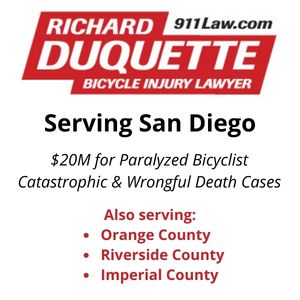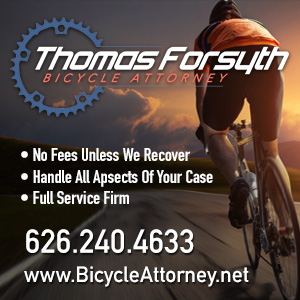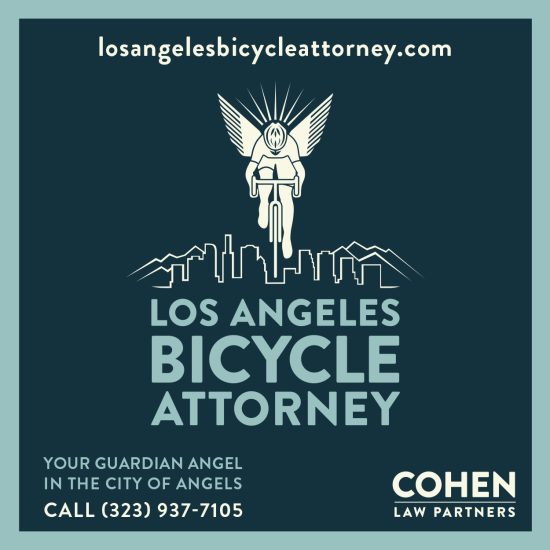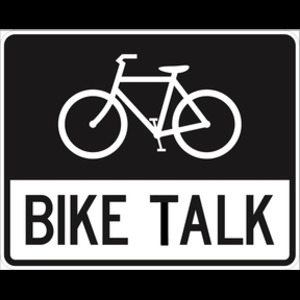A few random thoughts on StreetSummit before we move on to other topics.

Just a portion of those in attendance for StreetSummit
New York Transportation Commissioner Janette Sadik-Khan credited her amazing success in transforming one of the nation’s most crowded and built-out cities to the support she’s received from the city’s highly motivated mayor.
In Los Angeles, where the traffic demands of a built-out city are often used as a reason for attempting little and accomplishing less, our transportation officials have yet to receive a level of support that would give LADOT leader Rita Robinson the political cover she needs to begin the long overdue transformation of L.A.’s transportation picture.
Whether she has the will or desire to take action is another question. As is whether L.A. Mayor Villaraigosa will move beyond his newfound support of CicLAvia and his bold 30/10 plan, and use the political freedom provided by his final term in office to truly transform the livability of this city. And in the process, effectively position himself for higher office.
Or we can continue to follow an unsustainable auto-centric traffic model until it kills us — literally and figuratively.
………
Meanwhile, Long Beach’s seemingly sudden transformation into SoCal’s most bike-friendly community followed a different pattern.
While the city’s Mobility Coordinator Charlie Gandy — the man once named America’s #1 Bike Advocate and the closest thing we may ever see to our own Sadik-Khan — gave credit to the support he’s received from elected officials and the business community, other members of his panel told a different story.
Professional cyclist and Long Beach Bike Ambassador Tony Cruz, BikeStation President and CEO Andrea White-Kjoss and Long Beach Bicycle Festival Director Mark Bixby talked about their 10-year struggle to change local attitudes that began long before Gandy arrived in the city. And refusing to give up despite the knee-jerk anti-bike opposition they initially faced.
When they failed to place a bike boulevard on one street, they simply moved to another street and got the support of local residents and business people before going forward. And kept plugging away until attitudes slowly shifted.
That’s the same model that has lead to whatever limited success we’ve had here in L.A. — and the one we’ll most likely have to follow in the absence of an unexpected turnaround from L.A.’s mayor and transportation officials.
………
 As the photo to the right shows, one of N.Y.’s boldest moves has not only proven to be exceptionally popular, but extremely effective, as well.
As the photo to the right shows, one of N.Y.’s boldest moves has not only proven to be exceptionally popular, but extremely effective, as well.
Closing a long swath of Broadway to vehicular traffic didn’t result in the disastrous gridlock many people predicted. Instead, it actually improved traffic flow while reducing injuries.
We know that because the city tracked vehicular and pedestrian traffic, as well as accident and injury rates, both before and after the transformation.
So there’s no argument that it hasn’t been a success. And no one has to guess what effect it’s had. It’s all right there in black and white. Or sort of a bluish grey and green, anyway.
 Their stat tracking ability has also allowed the city to set definitive goals going forward — like doubling bicycle commuting and cutting traffic deaths by 50%. That’s in addition to more concrete goals like continuing to stripe bike lanes at a rate of 50 miles a year.
Their stat tracking ability has also allowed the city to set definitive goals going forward — like doubling bicycle commuting and cutting traffic deaths by 50%. That’s in addition to more concrete goals like continuing to stripe bike lanes at a rate of 50 miles a year.
And that is the key argument in transforming our own streets.
Do we want to continue to follow the L.A. model of moving ever more cars through our streets, with ever decreasing efficiency — while adding bike lanes at an annual rate less than 5% of New York’s? Or do we want to ensure that more of the people who use those streets get home safely, even if that means arriving at your destination a few minutes later?
………
That was something else Charlie Gandy addressed.
What has fueled Long Beach’s rapid transformation was a shift in transportation priorities from moving more cars to livable streets. And changing the city’s privileged class from motorists to pedestrians, bicyclists and businesses, along with a willingness to accept a certain level of congestion in order the achieve other goals.
And that seems like a reasonable trade-off to me.
………
Going back to Sadik-Khan’s discussion of the Broadway transformation, given the success of the project, it’s easy to forget that it started out as an experiment. Broadway was initially closed on a temporary basis; it was only a few weeks ago that the closure became permanent.
And that was something else she stressed.
Bike infrastructure is relatively inexpensive — especially compared to other forms of transportation projects. “You can do a lot with a paintbrush and a paint can,” she said.
And it doesn’t have to be permanent.
“You have to experiment, try things out,” she insisted. “If it doesn’t work, okay, you move on and try something else.”
“There’s no risk, except falling behind and not being imaginative.”
We can only hope that LADOT was paying attention.
………
One last thought before moving on to today’s linkage.
The panel I hosted on bikes and political action at StreetSummit resulted in a clear mandate for a Los Angeles branch of Austin’s successful League of Bicycling Voters. In fact, over 80% of the people who attended the workshop put their email addresses on an impromptu interest list.
More on that soon.
I also left with an invitation from Charlie Gandy to come down to Long Beach and take a look at what they’re doing down there.
And I plan to take him up on that.
………
Josef Bray-Ali may say he’s running out of ideas, but this last one’s brilliant — changing the laws that require parking spaces for residential or retail development to allow bike parking, instead.
………
L.A. is a bike Mecca — or at least it was, 113 years ago. The LACBC reports on the East L.A. meeting for the county bike plan, and will work with the South Bay Bicycle Coalition to develop a plan for the South Bay region. Dr. Alex is highly critical of LACBC’s leap into planning and LADOT’s new blog — and takes Damien to task for being too “balanced” in a story about LADOT’s new blog. Stephen Box takes Metro to task for the non-opening of the long unplanned Bike Room at Hollywood and Vine. Learning to ride in L.A. from the perspective of a veteran driver. Mark your calendar for Bike Night at the Hammer Museum on April 8th. Riders on San Francisco’s Wiggle wobble, but they don’t fall down. A 40-year old cyclist must have caught some serious air to cross onto the other side of the road and hit a car head on; thanks to Opus the Poet for the link. The California Bicycle Advisory Committee is scheduled to discuss bike boxes on April 8th. Road rash is a common — and painful — part of cycling. Tell me about it. Even in these Tea Party days, most Americans support safe walking and biking. If an attractive, cycle-chic woman can be invisible on a bike, there’s no hope for any of us. A busy Portland bridge gets a lovely 15-foot wide bike lane. Free bike use for hotel guests in DC. Contending with BPRs (Bike Path Racers) while riding at rush hour in Seattle. A follow-up to Sunday’s information-free story about a cyclist in my hometown critically injured in a left hook collision. The L.A. Times discusses bike sharing in Los Angeles Mexico City (sorry, from the description of car culture-crowded streets and rude, uncaring drivers, it’s hard to tell the difference). Lance, Cadel Evans and Bradley Wiggins all get invitations to this years Tour; Dutch teams get shut out despite the Netherlands start. AMEX demands compensation from a Dutch cyclist who damaged a rental car by allowing it to run into her. London’s long-planned bike sharing program — or scheme, as the Brits would say — becomes a reality July 30th. Britain’s pedaling posties are being phased out for safety reasons. Buy a home, get a bike. After surviving the war in Afghanistan, a British soldier dies trying to dodge a 15-foot pothole on his bike. Israeli cyclists protest a ban on riding in national parks. Dubai’s Roads and Transport Authority encourages people to ride bikes; Dubai Police respond by confiscating them.
Finally, more proof that bikes are entering the mainstream — a full-head helmet wearing bank robber makes his getaway on a red BMX bike, just days after a similar BMX getaway near Seattle; no report on whether they attempted to leap any cars as they fled.
Happy Passover!
Like this:
Like Loading...














